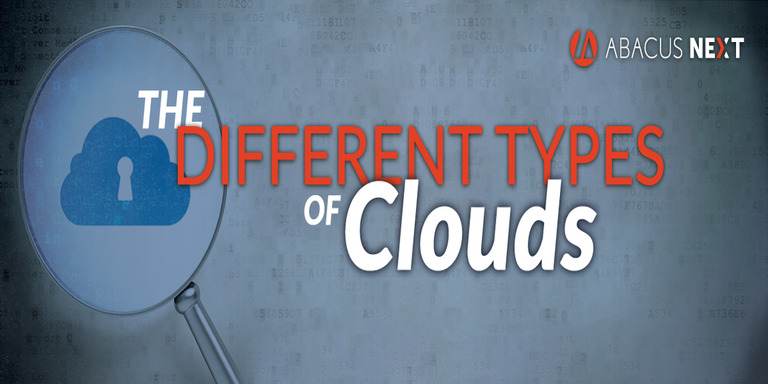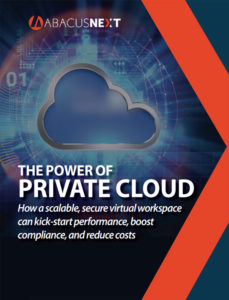What’s the Difference between Public, Private, Hybrid, and Community Clouds?

Cloud computing offers notable advantages for businesses of all sizes. Moving all or part of a company’s computer resources to the cloud involves deciding which cloud services and which type of cloud best suits the company’s needs.
There are two fundamentally different types of clouds, public and private. Each has its own advantages and disadvantages. However, cloud computing is continually evolving and cloud-service providers (CSPs) may offer hybrid clouds that combine features of both the public and private models. Community clouds are a recent variant of hybrid clouds that are built to serve the specific needs of different business communities.
 Download your free copy of our whitepaper, The Power of Private Cloud to see how a scalable, secure virtual workspace can kick-start performance, boost compliance, and reduce costs.
Download your free copy of our whitepaper, The Power of Private Cloud to see how a scalable, secure virtual workspace can kick-start performance, boost compliance, and reduce costs.
Private Clouds
In a private cloud, a business has access to infrastructure in the cloud that is not shared with anyone else. The business typically deploys its own platforms and software applications on the cloud infrastructure. The business’s infrastructure usually lies behind a firewall that is accessed through the company intranet over encrypted connections. Payment is often based on a fee-per-unit-time model.
Private clouds have the significant advantage of being able to provide enhanced levels of security and privacy because computer infrastructure is dedicated to a single client. Sarbanes Oxley, PCI and HIPAA compliance are all possible in a private cloud. In addition, private cloud CSPs are more likely to customize the cloud to meet a company’s needs.
An important disadvantage of private clouds for some companies is that the company is responsible for managing their own development platforms and software applications on the CSP’s infrastructure. While this gives the business substantial control on the software side, it comes at the cost of having to employ IT staff that can handle the company’s cloud deployment. Recognizing this disadvantage, some CSPs provide software applications and a virtual desktop within a company’s private cloud.
Private clouds have the additional disadvantages that they tend to be more expensive and the company is limited to using the infrastructure specified in their contract with the CSP.
Public Clouds
In a public cloud, individual businesses share on premise and access to basic computer infrastructure (servers, storage, networks, development platforms etc.) provided by a CSP. Each company shares the CSP’s infrastructure with the other companies that have subscribed to the cloud. Payment is usually pay-as-you-go with no minimum time requirements. Some CSPs derive revenue from advertising and offer free public clouds.
Public clouds are usually based on massive hardware installations distributed in locations throughout the country or across the globe. Their size enables economies of scale that permit maximum scalability to meet requirements as a company’s needs expand or contract, maximum flexibility to meet surges in demand in real time, and maximum reliability in case of hardware failures.
Public clouds are highly cost effective because the business only pays for the computer resources it uses. In addition, the business has access to state-of-the-art computer infrastructure without having to purchase it and hire IT staff to install and maintain it.
The main disadvantage of public clouds is that advanced security and privacy provisions are beyond their capabilities. For example, public clouds cannot meet many regulatory compliance requirements because their tenants share the same computer infrastructure. In addition, large CSP’s often implement their public clouds on hardware installations located outside the United States which may be a concern for some businesses.
Public clouds are well suited for hosting development platforms or web browsers, for big data processing that places heavy demands on computer resources, and for companies that do not have advanced security concerns.
Hybrid Cloud
In a hybrid cloud, a company’s cloud deployment is split between public and private cloud infrastructure. Sensitive data remains within the private cloud where high security standards can be maintained. Operations that do not make use of sensitive data are carried out in the public cloud where infrastructure can scale to meet demands and costs are reduced.
Hybrid clouds are well suited to carrying out big data operations on non-sensitive data in the public cloud while keeping sensitive data protected in the private cloud. Hybrid clouds also give companies the option of running their public-facing applications or their capacity intensive development platforms in the public portion of the cloud while their sensitive data remains protected.
Community Clouds
Community clouds are a recent variation on the private cloud model that provide a complete cloud solution for specific business communities. Businesses share infrastructure provided by the CSP for software and development tools that are designed to meet community needs. In addition, each business has its own private cloud space that is built to meet the security, privacy and compliance needs that are common in the community.
Community clouds are an attractive option for companies in the health, financial or legal spheres that are subject to strict regulatory compliance. They are also well-suited to managing joint projects that benefit from sharing community-specific software applications or development platforms.
The recent development of community clouds illustrates how cloud computing is evolving. CSPs can combine different types of clouds with different service models to provide businesses with attractive cloud solutions that meet a company’s needs.